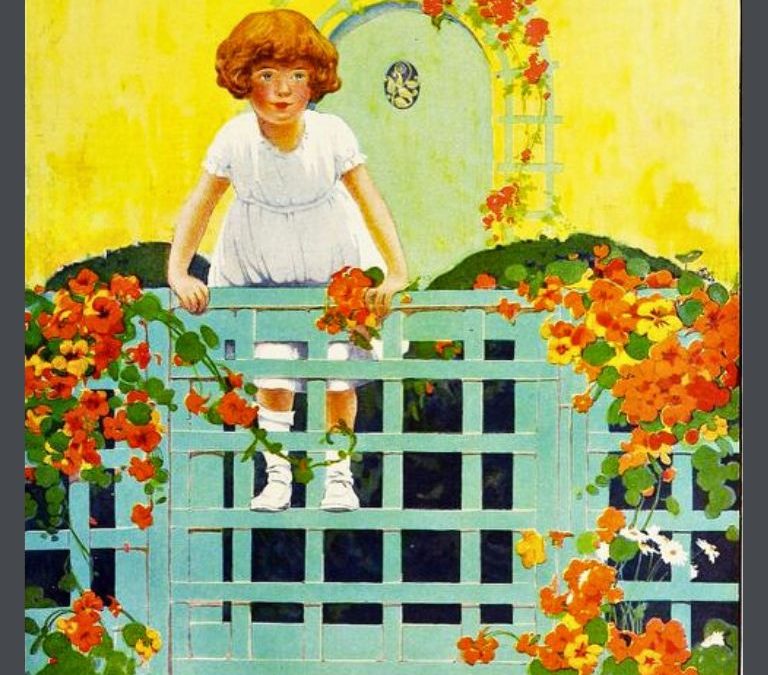
by bungalow101 | Feb 20, 2024 | Landscaping, OUTSIDE
 THE CRAFTSMAN
THE CRAFTSMAN
Volume 6
April 1904-September 1904
by Alice M. Rathboxe
Long and serious discourses upon happiness have ended without a word for the value of gardening as one of the very simplest means to that end. The truly wise, however, know full well this happy secret, and rejoice accordingly in the best of all the fruits of garden labor.
To Emerson’s, “Give me health and a day,” let us add a little garden. “The pomp of emperors” is indeed “ridiculous” compared with the bliss that comes from “a few and cheap elements”‘ within reach of almost all of us. One condition only is to be met if we would grow this fruit called happiness to perfection, and pluck it with unmingled joy. It must flourish in a garden not too large to be under its fortunate owner’s personal care. No factotum, be he ever so well disposed really to help should be allowed to invade the little garden after the turning of the earth accomplished in the spring, lest opportunities for happiness escape us. The sowing of the seed, the tucking comfortably away of the wonderful bulbs in the fresh earth, the staking and training of plants, even the weeding of borders and the sweeping of walks, are all so many means of grace to the garden-lover.
“IS A FIT OF BLUES IMPENDING?”
Then sally forth well armed with trowel, rake, hoe—all the needful weapons—and the demons will fly before you, quite dismayed by the variety of fresh interests to be found even in a garden reduced to its simplest terms.
A neighbor, transplanted from her maiden home into new and somewhat uncongenial surroundings, found unfailing relief from homesickness, in her garden, through the summer, among her window-plants, in winter. Resolutely would she turn to Mother Earth for the comfort denied her elsewhere.
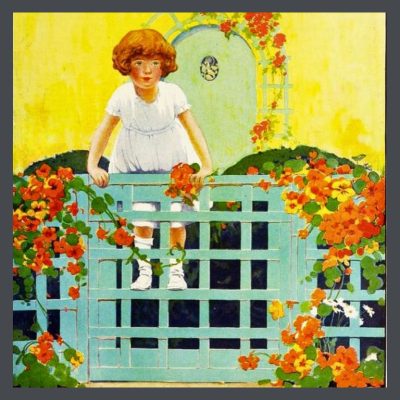 Equal to its efficacy as a mind cure, is its effect for good on physical ills. Yet gardening as a remedial proposition is, unfortunately, not half so popular among us as patent medicines.
Equal to its efficacy as a mind cure, is its effect for good on physical ills. Yet gardening as a remedial proposition is, unfortunately, not half so popular among us as patent medicines.
“In half an hour,” says Charles Dudley Warner in “My Summer in a Garden.” “I can hoe myself right away from this world as we commonly see it, into a large place where there are no obstacles.”
That “large place” should be the inheritance of all who can compass the use of a bit of earth, and to this end a taste for gardening should be encouraged among children. Whoever succeeds in planting in a child’s mind a love for ‘”the green things growing,” deep enough to reach a willingness to work for them, makes for the greater happiness of one life throughout all its stages. Gifts of seeds, roots and tools will help the little Adams and the Eves to realize the delights of a Paradise which may lie, perchance, in some neglected corner of the back yard, and as the little folk cultivate, at the same time, their gardens and their tastes, they are providing themselves with a pleasant resource for their declining years.
“THE LITTLE ARTS OF HAPPINESS”
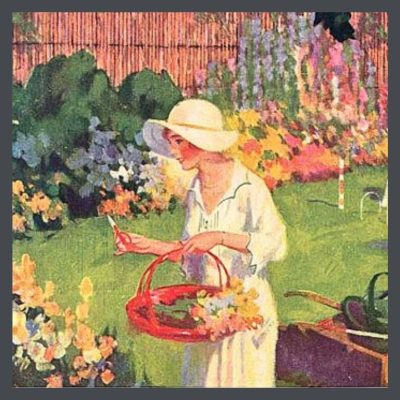 Lady Mary Wortley Montague tells us “Gardening is certainly the next amusement to reading, and as my sight will now permit me little of that, I am glad to form a taste that can give me so much employment, and be the plaything of my age, now that my pen and needle are almost useless to me.”
Lady Mary Wortley Montague tells us “Gardening is certainly the next amusement to reading, and as my sight will now permit me little of that, I am glad to form a taste that can give me so much employment, and be the plaything of my age, now that my pen and needle are almost useless to me.”
In a garden, if anywhere, “the little arts of happiness” do certainly abound. As one goes out of a morning, the opening of a long-watched-for blossom may change the aspect of a whole day, and it is precisely this simple, natural coming of the garden pleasures that makes them never ending, while the happy garden hours last. Nowhere, however, does staid old Father Time allow himself to take on such flighty ways as in a garden—the pleasant hours are gone before one knows—and this trick of his is the nearest approach to a flaw in the joy of the summer-time.
Our good old Henry—factotum, philosopher and friend in one—summed up this question of the best fruit of a garden in his own wise way : “You don’t want a garden too large,” said he, “just large enough to make you happy. It’ll do that. I’ve tried it many a time. It makes you feel good when you feel bad.”
“Who loves his garden, still keeps his Eden.”
To learn more about Gustav Stickley, the publisher of The Craftsman magazine which featured this eloquent article, click here.
MORE ON CRAFTSMAN GARDENS
Please read my article on Native gardens, which I consider to be a perfect complement to any bungalow, as well as being very user & Earth friendly.
Treat yourself to more wonderful garden images on my Pinterest page.

STAY IN THE BUNGALOW KNOW!!!
Sign up for our newsletter & receive our FREE E-book, 7 VITAL Things to Do Before You Hire a Contractor.
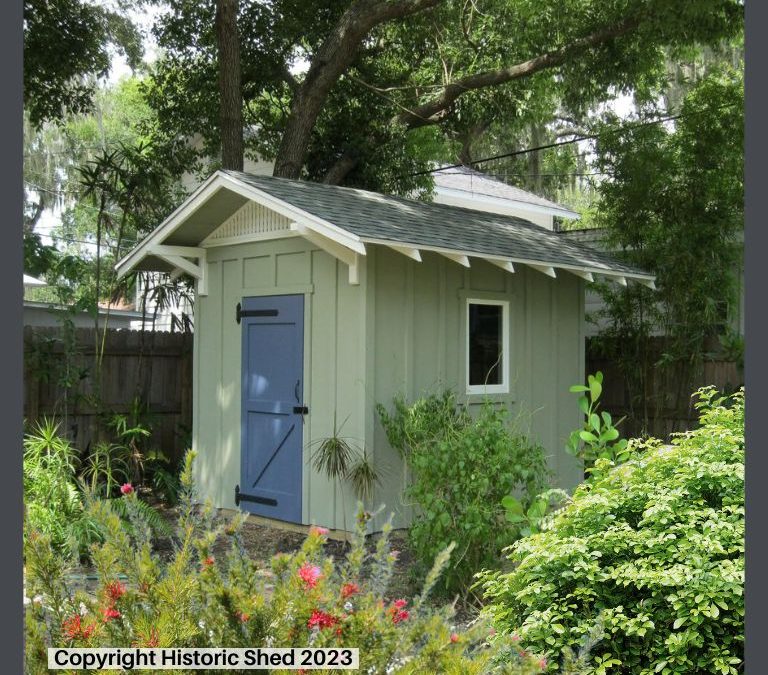
by Jo-Anne Peck | Mar 29, 2023 | Features, Landscaping, OUTSIDE
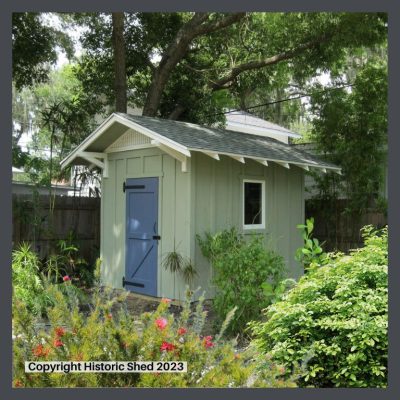 There are so many things to deal with when you have a historic bungalow, even after the primary renovations are done. So, it’s quite forgivable if you are tempted to head off to the local shed supplier and stick a pre-made metal shed in the yard just to have a dry place for the lawnmower or the barbeque, or here in Florida, your hurricane shutters. Hm-m-m, I guess in colder climes, it can hold your storm shutters or your screens, depending on the season. But pre-made sheds that don’t match your bungalow can be an eyesore in an otherwise perfectly renovated or restored property, so don’t be hasty in your purchase.
There are so many things to deal with when you have a historic bungalow, even after the primary renovations are done. So, it’s quite forgivable if you are tempted to head off to the local shed supplier and stick a pre-made metal shed in the yard just to have a dry place for the lawnmower or the barbeque, or here in Florida, your hurricane shutters. Hm-m-m, I guess in colder climes, it can hold your storm shutters or your screens, depending on the season. But pre-made sheds that don’t match your bungalow can be an eyesore in an otherwise perfectly renovated or restored property, so don’t be hasty in your purchase.
A properly designed shed that complements your historic bungalow can also enhance your property, both aesthetically & financially. A really cute one can amuse you & make up for the dollhouse that you never had. Nestled in your garden, it can be an elf house that doubles as a utility shed
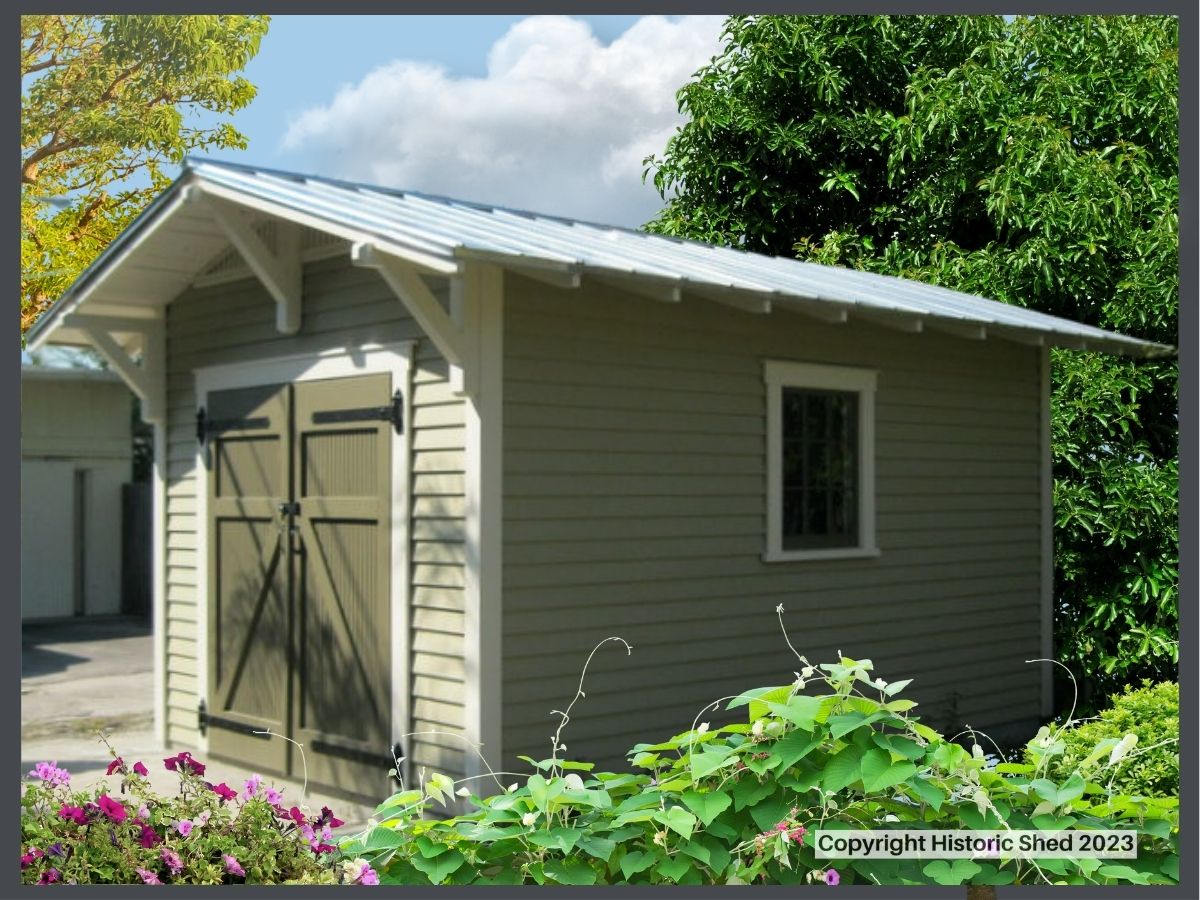
A new shed designed to match a historic Craftsman bungalow.
Until I started a shed company with my husband, I can’t say I spent much time thinking about sheds or their design. But while working on a large preservation project, the residents of the newly rehabbed houses started clamoring for sheds that were allowed within the historic district and it came to my attention that living within a historic district created some problems for anyone that wanted storage and didn’t already have an outbuilding (I’d been lucky to have had a historic one-car garage that came with each of the 1920s homes I had owned at that point). Since most stock metal sheds weren’t allowed by the local preservation review boards, residents had to hire a designer, get local preservation approval, then get a contractor to build the shed (including permits since they are required for most sheds here in Florida). That lead us to starting a whole company dedicated to designing and building historically appropriate sheds and thus changed the direction of my life for a while (but that’s a whole ‘nother story that has mostly ended).
Along the way I found that it was fairly easy to design a historically appropriate shed for historic homes if you follow a few straightforward design rules. I will attempt to lay them out here in an organized fashion.
START WITH THE SIZE OF YOUR HISTORIC BUNGALOW SHED
It seems obvious, but start with thinking about what you want to put in the shed. What are the big items? How much room do you need to maneuver around them? Where can shelves go? Would it be worth having loft storage for items like holiday decorations that you only need to get out once a year rather than making the shed larger?
Think about things you don’t have now, but might put in the shed someday. We had a customer who bought a 16′ kayak after we built her a 14′ long shed – she ended up having to store it outside along the back wall.
Think about possible future uses. Would you want to finish out your shed for a home office or pool house at a later date? Or even turn it into a guest house?
Bigger can be better, but if you build it, you will fill it. And the bigger you go, the more it costs, so you want to be sure you right size it.

Shed design to complement a Mission style bungalow.
LOOK AT YOUR YARD
How much room do you have for the shed? And how much room will be left after you build it? Then think about whether your shed would interfere with future yard plans like the pool or deck you’ve been dreaming about. Next check your local zoning codes to see what any required side and rear yard setbacks would be. Many places will not allow you to place the shed right on your property line, so you may have less space than you think you have. We’ve installed sheds in places where they required as much as 10′ setback from the rear property line!
Next, consider how the shed placement can help your yard layout. Are there desirable views you don’t want to block? Or are there undesirable things your shed can hide if you place it right? How will you landscape around it? Does the area where you’d like to place it flood or have standing water after it rains? Are there trees in the way (don’t forget to look up at branches as well as the base)? And are there utility wires in the way, above or below ground?
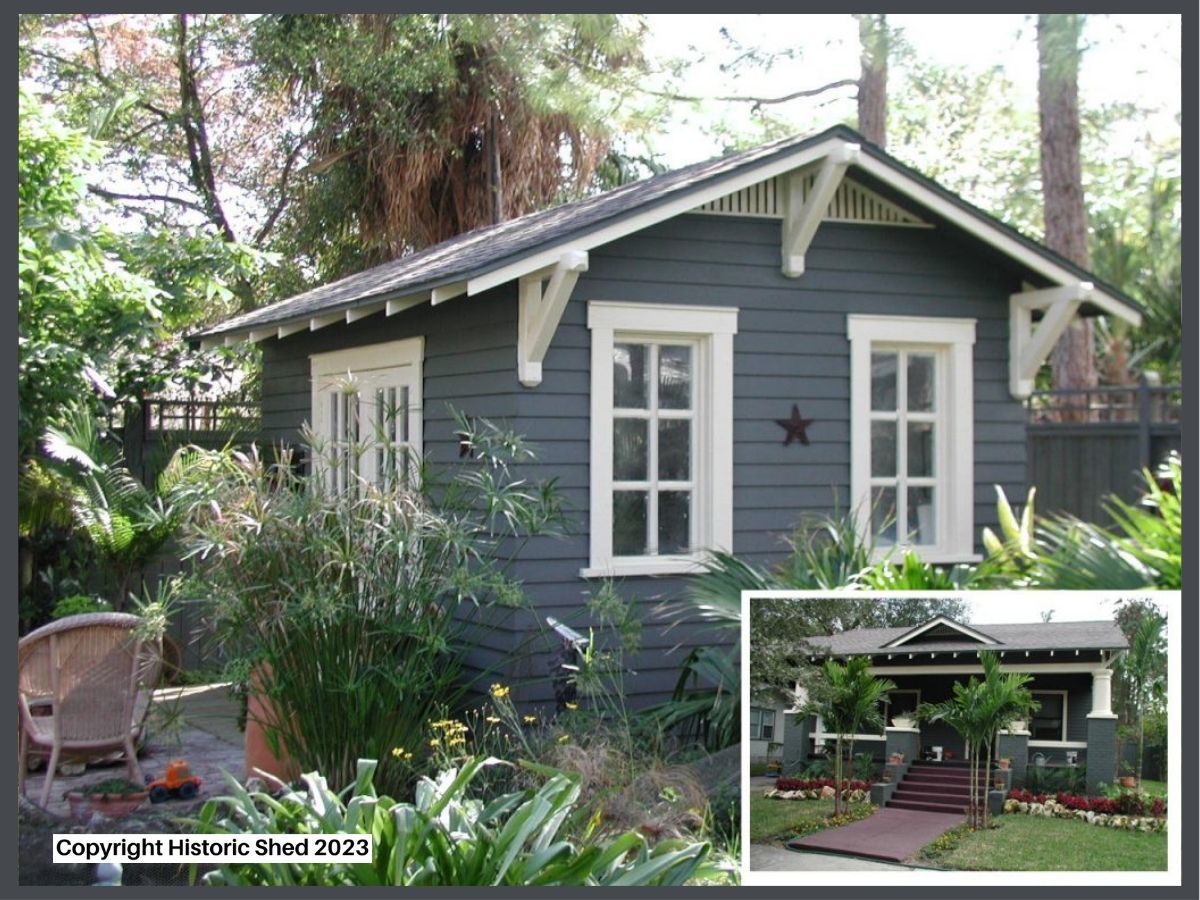
LOOK AT THE ROOF OF YOUR HISTORIC BUNGALOW
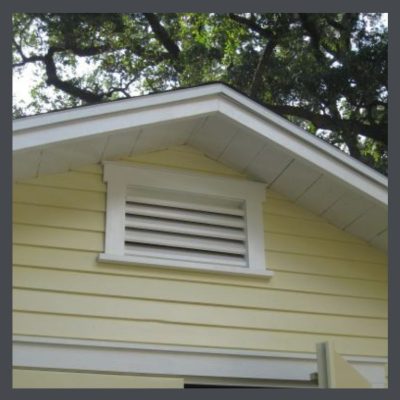
This shed vent was designed to match the one of the main house.
Since most sheds are just boxes with a roof, I find duplicating the roof details to be the easiest way to make the shed complement the main house. Start with the roof shape. Is it a gable, hipped, jerkinhead or some other shape? Or if your house has a combination of roof shapes, such as a hipped main roof with a gable porch, decide what you find most prominent from the side facing where the shed will be built (often the rear).
The next part of the roof to match is the roof slope. A shallow roofed shed won’t look good next to a Folk Victorian with a steeply pitched roof, even if it is the same roof shape. You don’t have to match it precisely, but there are phone apps that will help you determine your house’s roof pitch to get you in ballpark.
Then study the eave details. Does the house have wide overhanging eaves or narrow? Are there exposed rafters or boxed soffits? Do the tails have a specific design? These are all elements you may want to consider in your new shed.
And lastly, are there brackets or outriggers or other details you’d like to include in the shed design? And if there are roof vents, what shape are they? As sheds aren’t generally climate controlled, this is an important design and functional feature, so you might as well make it look right.
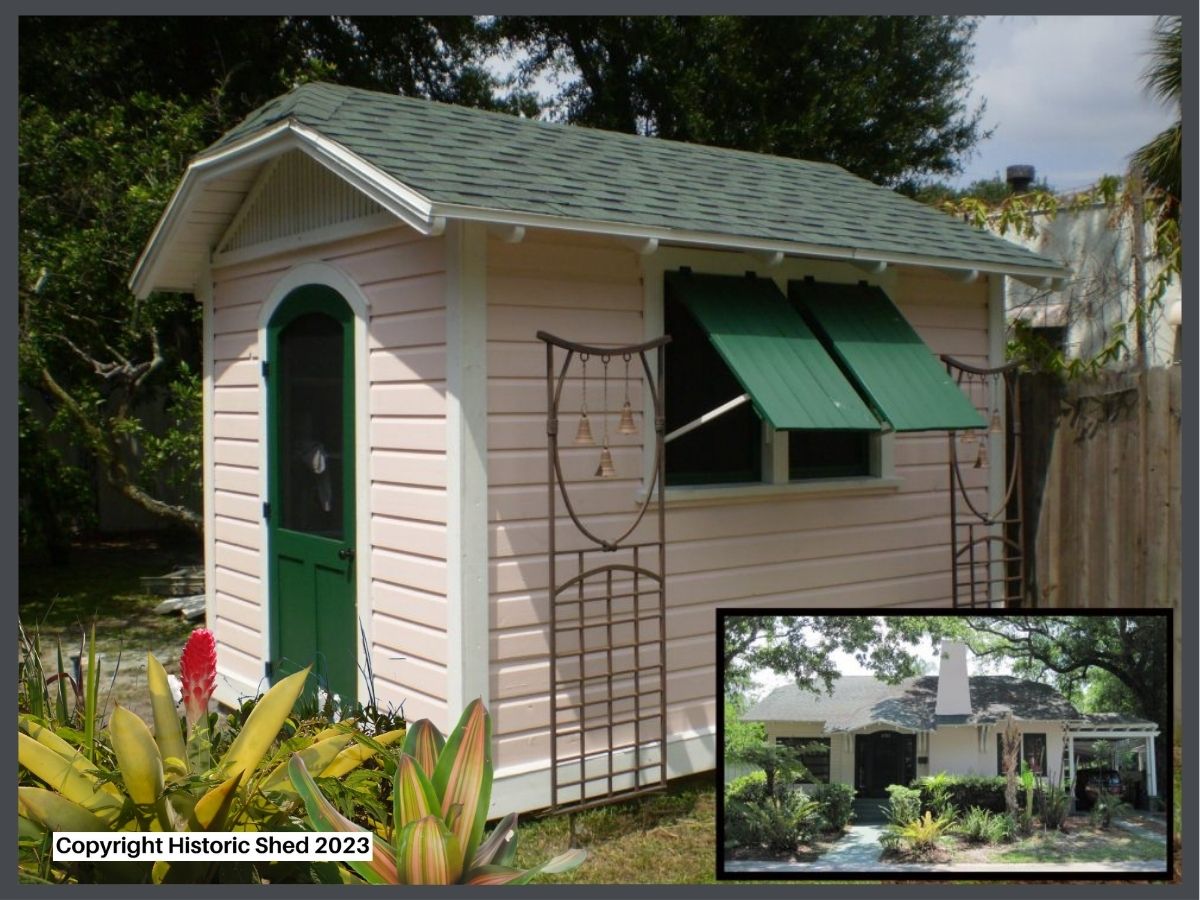
A shed designed to match a bungalow with a jerkinhead roof and rounded rafter tails.
NOW LOOK AT THE OTHER FEATURES OF YOUR HISTORIC BUNGALOW
What material is on the exterior walls of the house? If it’s siding, what is the profile and exposure? If its stucco, is it smooth or textured? If you can’t match the main house exterior due to costs or availability, are there materials that are complementary? For example, will lap siding look good next to your brick house (the answer is usually yes)?
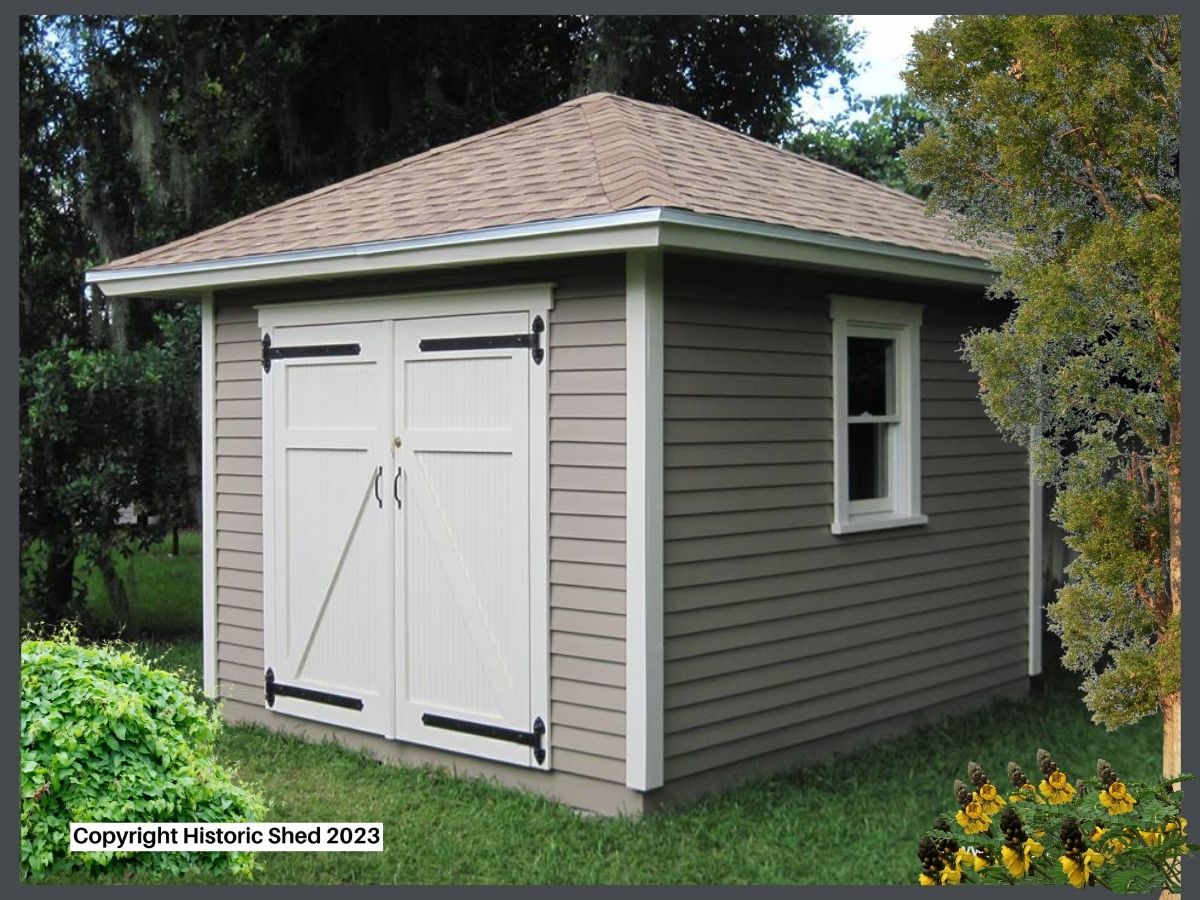
A hipped roof shed with boxed eaves and lap siding.
Similarly, plan to match the roofing material of the main house as closely as possible on the shed. Or, if you will be replacing the main house roof soon, choose the future roof so you don’t have to change out the shed at the same time.
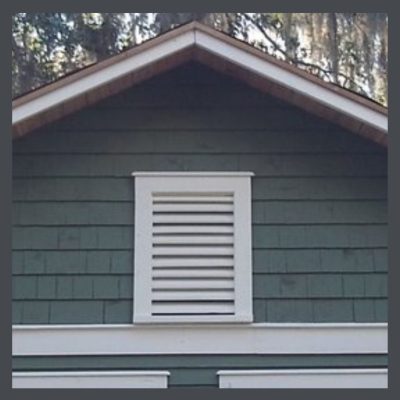
Have fun with the other design elements from the main house as well. If there are shingles on the gable of the house, it can be a great feature on your new shed as well.
Then look at the other details on the house such as windows, doors, and trim. Choose windows of similar design and proportions as the main house, although you can choose a simpler sash pattern if you’d like (for example, 1/1 windows rather than 6/1) since the accessory building can be subordinate in design as well as size to the main house. Just as important, look at the exterior trim on the windows and door and plan to match them in the shed.
Finally, choose paint colors for the shed that are either the same as the house or a complementary pallet. Or, go crazy and use it to try out a color schemes that you are considering for the main house.
NOW ENJOY YOUR LOVELY SHED!
Just kidding. You still have to build it. Of course, designing the perfect shed for your bungalow is only step one in the process, but hopefully these tips will help you feel confident that your new shed will indeed be designed to be a perfect companion to your old house. If I get ambitious, I will write up some tips on building the shed so it will last as long as your historic home as well.
In the meantime, you can peruse some designs for bungalow sheds in the Historic Shed Collection – Liberty House Plans or you can get a custom design done at http://historicshed.com.
TIP: Read the post about a shed that we built for Suzanne HERE!
 This article was written by Jo-Anne Peck of Preservation Resource, Inc. & Historic Shed. Jo-Anne is a historic preservation professional with a degree in Building Science, a Master’s of Fine Arts in Historic Preservation & a licensed Florida Building Contractor with over 25 years experience in preservation. She has kindly provided these photos & this information based on her vast knowledge of bungalows.
This article was written by Jo-Anne Peck of Preservation Resource, Inc. & Historic Shed. Jo-Anne is a historic preservation professional with a degree in Building Science, a Master’s of Fine Arts in Historic Preservation & a licensed Florida Building Contractor with over 25 years experience in preservation. She has kindly provided these photos & this information based on her vast knowledge of bungalows.
 STAY IN THE BUNGALOW KNOW!!!
STAY IN THE BUNGALOW KNOW!!!
Sign up for our newsletter & receive our FREE E-book, 7 VITAL Things to Do Before You Hire a Contractor.
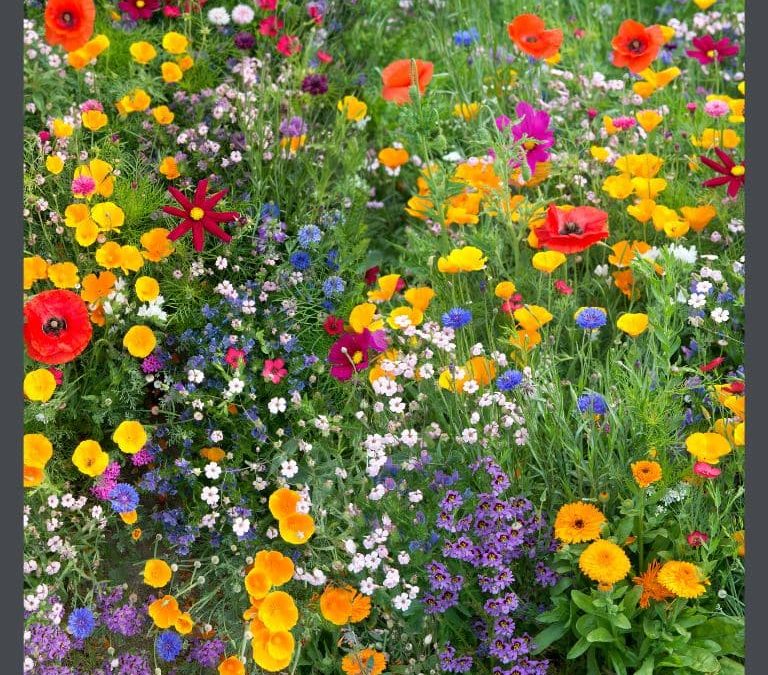
by bungalow101 | Jun 13, 2022 | Landscaping
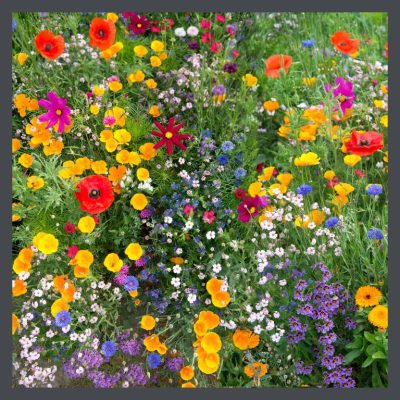 Using native landscaping for your bungalow is eco-friendly, easier care & a beautiful complement to your house of natural materials.
Using native landscaping for your bungalow is eco-friendly, easier care & a beautiful complement to your house of natural materials.
“Everything made by man’s hands has a form, which must be either beautiful or ugly; beautiful if it is in accord with Nature, & helps her; ugly if it is discordant with nature.” -William Morris, considered to be the founder of the Arts & Crafts Movement.
The Movement was a reaction to the Industrial Revolution which had generated new opportunities & economic growth, but also introduced pollution on a scale not yet experienced on our planet. As well, the increased production of materials demanded that we utilize our natural resources at an unprecedented pace.
Our environment is under even greater stress today. More & more species are becoming extinct. The Monarch butterfly was recently placed on the endangered list!
So how can we plant gardens to be, “beautiful if it is in accord with Nature, and helps her.” How can we be in accord with our natural world? By considering native landscaping for your bungalow.
WHY USE NATIVE LANDSCAPING FOR YOUR BUNGALOW?
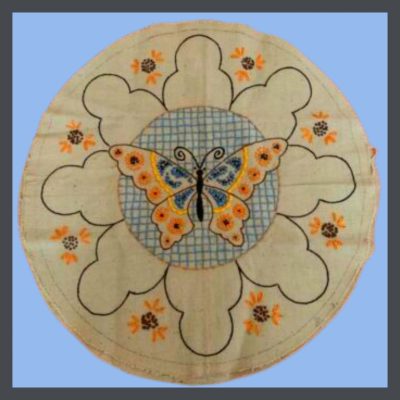 The United States National Arboretum defines a native plant as “one that occurs naturally in a particular region, ecosystem, or habitat without direct or indirect human intervention.” And, how are they beneficial to our natural world?
The United States National Arboretum defines a native plant as “one that occurs naturally in a particular region, ecosystem, or habitat without direct or indirect human intervention.” And, how are they beneficial to our natural world?
The California Native Plant Society states, “These plants have coevolved with animals, fungi and microbes, to form a complex network of relationships. They are the foundation of our native ecosystems, or natural communities.”
This coevolution is the key. Evolution, in biology, is defined as the change in the characteristics of a species over several generations & may result in changes which give the individual an advantage in survival which they can then pass on to their progeny. Coevolution occurs when two species, or groups of species, evolve alongside each other, adapting to changes in the other, giving one another an advantage in survival. These changes could be caused by any source- climate, air & water quality, natural disasters such as fire, pathogens affecting any part of the group, etc. So here we have this nice little group of plants, animals, (including insects) fungi & microbes all working in harmony for the mutual survival of all, making adjustments every generation as together they fine tune their abilities to survive & multiply. It’s the ultimate in cooperation!
A prime example of this is the relationship between flowering plants & insects & birds that pollinate them. The flowering plants have developed adaptations that allow them to attract pollinators, & there is evidence that some flowering plants sweeten their nectar when they perceive the buzz of a bee. The insects and birds have also developed specialized adaptations for extracting nectar & pollen from the plants.
Flowers & their flitting pollinators were a common theme in the textiles & pottery of the Arts & Crafts Movement- bees, butterflies, birds. Life & its creations were considered precious in the Movement & the natural world with its beauty & vitality were exhaulted in their art.
IN THE FOREST, THE ULTIMATE NATIVE GARDEN
Suzanne Simard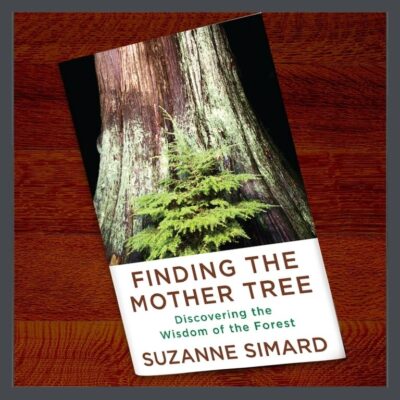 a descendant of loggers, now a professor of forest ecology at the University of British Columbia, is one of the first women in the industry & has made some monumental discoveries about the wisdom of trees. In an interview on NPR she states, “Keep in mind that all trees and all plants — except for a very small handful of plant families — have obligate relationships with these fungi. That means that they need them in order to survive and grow and produce cones and have fitness — in other words, to carry their genes to the next generations. And the fungi are dependent on the plant or the trees … because they don’t have leaves themselves [for photosynthesis]. And so they enter into this symbiosis in that they live together in the root, and they exchange these essential resources: carbohydrates from the plant for nutrients from the fungus, in this two-way exchange which is very tight, almost like a market exchange.
a descendant of loggers, now a professor of forest ecology at the University of British Columbia, is one of the first women in the industry & has made some monumental discoveries about the wisdom of trees. In an interview on NPR she states, “Keep in mind that all trees and all plants — except for a very small handful of plant families — have obligate relationships with these fungi. That means that they need them in order to survive and grow and produce cones and have fitness — in other words, to carry their genes to the next generations. And the fungi are dependent on the plant or the trees … because they don’t have leaves themselves [for photosynthesis]. And so they enter into this symbiosis in that they live together in the root, and they exchange these essential resources: carbohydrates from the plant for nutrients from the fungus, in this two-way exchange which is very tight, almost like a market exchange.
If you give me five bucks, I’ll give you five bucks back. It’s very, very tightly regulated between those two partners in the symbiosis. But, yes, all trees and all plants in all of our forests around the world are dependent on this relationship.”
Now look at this over a span of millions of years. Generation after generation of trees are assisted by beneficial fungi which, in turn, feed on their fallen sisters. Every generation their abilities are expanded & their bonds strengthened.
PLEASE CONSIDER NATIVE LANDSCAPING FOR YOUR BUNGALOW
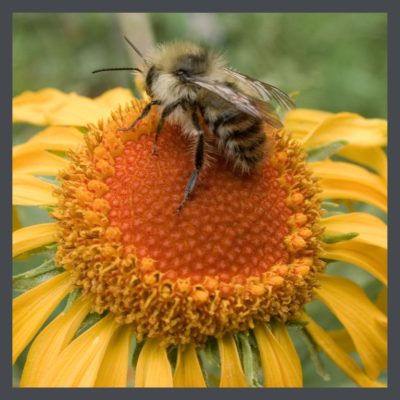 It is plain to see that life supports life. Darwin’s theory of survival of the fittest missed the important point that the fittest are the most cooperative. Cooperation is a natural activity, though we see far too many examples in which it is lacking. My grandmother was a farmer’s daughter & a rosarian, but foremost, she was a teacher. In turn I learned about trees & gardens from my mother. My brother is a Master Gardener. Gardening with your children & grandchildren provides an opportunity to teach them about living in cooperation with their fellows & with our Earth.
It is plain to see that life supports life. Darwin’s theory of survival of the fittest missed the important point that the fittest are the most cooperative. Cooperation is a natural activity, though we see far too many examples in which it is lacking. My grandmother was a farmer’s daughter & a rosarian, but foremost, she was a teacher. In turn I learned about trees & gardens from my mother. My brother is a Master Gardener. Gardening with your children & grandchildren provides an opportunity to teach them about living in cooperation with their fellows & with our Earth.
As a gardener, you can contribute to this circle of life by planting natives. Your climate- temperature, rainfall, seasonal changes- is already in place for it. The make-up of your soil – clay, sandy, silty, peaty, chalky or loamy- is already there. The microbes that were there 100 years ago which developed to assist the indigenous plants are disturbed but you can coax them back to health by planting the species that were at home in your area for hundreds of years, themselves evolving to support the survival of the native microbes.
Planting species indigenous to your area, utilizes all the environmental conditions to their greatest effect because they evolved under these conditions. Their pollinators will return. Your plants will like ‘em & they will thrive with little fuss from you!
Please visit Wild Ones because they can help you get started. These wonderful folks provide resources for purchasing native plants, native garden plans, webinars- pretty much anything that you might need to get started with your new adventure in native landscaping for your bungalow. You can also call your local County Extension Service for advice & if you need help in figuring out which plants would be most attractive with your color scheme, this article on color basics will help.
TIP: Learn more about the Arts & Crafts Movement HERE!
 STAY IN THE BUNGALOW KNOW!!!
STAY IN THE BUNGALOW KNOW!!!
Sign up for our newsletter & receive our FREE E-book, 7 VITAL Things to Do Before You Hire a Contractor.
![]()
 This article was written by Jo-Anne Peck of Preservation Resource, Inc. & Historic Shed. Jo-Anne is a historic preservation professional with a degree in Building Science, a Master’s of Fine Arts in Historic Preservation & a licensed Florida Building Contractor with over 25 years experience in preservation. She has kindly provided these photos & this information based on her vast knowledge of bungalows.
This article was written by Jo-Anne Peck of Preservation Resource, Inc. & Historic Shed. Jo-Anne is a historic preservation professional with a degree in Building Science, a Master’s of Fine Arts in Historic Preservation & a licensed Florida Building Contractor with over 25 years experience in preservation. She has kindly provided these photos & this information based on her vast knowledge of bungalows. STAY IN THE BUNGALOW KNOW!!!
STAY IN THE BUNGALOW KNOW!!!


 THE CRAFTSMAN
THE CRAFTSMAN Equal to its efficacy as a mind cure, is its effect for good on physical ills. Yet gardening as a remedial proposition is, unfortunately, not half so popular among us as patent medicines.
Equal to its efficacy as a mind cure, is its effect for good on physical ills. Yet gardening as a remedial proposition is, unfortunately, not half so popular among us as patent medicines. Lady Mary Wortley Montague tells us “Gardening is certainly the next amusement to reading, and as my sight will now permit me little of that, I am glad to form a taste that can give me so much employment, and be the plaything of my age, now that my pen and needle are almost useless to me.”
Lady Mary Wortley Montague tells us “Gardening is certainly the next amusement to reading, and as my sight will now permit me little of that, I am glad to form a taste that can give me so much employment, and be the plaything of my age, now that my pen and needle are almost useless to me.”
 There are so many things to deal with when you have a historic bungalow, even after the primary renovations are done. So, it’s quite forgivable if you are tempted to head off to the local shed supplier and stick a pre-made metal shed in the yard just to have a dry place for the lawnmower or the barbeque, or here in Florida, your hurricane shutters. Hm-m-m, I guess in colder climes, it can hold your storm shutters or your screens, depending on the season. But pre-made sheds that don’t match your bungalow can be an eyesore in an otherwise perfectly renovated or restored property, so don’t be hasty in your purchase.
There are so many things to deal with when you have a historic bungalow, even after the primary renovations are done. So, it’s quite forgivable if you are tempted to head off to the local shed supplier and stick a pre-made metal shed in the yard just to have a dry place for the lawnmower or the barbeque, or here in Florida, your hurricane shutters. Hm-m-m, I guess in colder climes, it can hold your storm shutters or your screens, depending on the season. But pre-made sheds that don’t match your bungalow can be an eyesore in an otherwise perfectly renovated or restored property, so don’t be hasty in your purchase. 







 Using native landscaping for your bungalow is eco-friendly, easier care & a beautiful complement to your house of natural materials.
Using native landscaping for your bungalow is eco-friendly, easier care & a beautiful complement to your house of natural materials. The United States National Arboretum defines a native plant as “one that occurs naturally in a particular region, ecosystem, or habitat without direct or indirect human intervention.” And, how are they beneficial to our natural world?
The United States National Arboretum defines a native plant as “one that occurs naturally in a particular region, ecosystem, or habitat without direct or indirect human intervention.” And, how are they beneficial to our natural world?
 It is plain to see that life supports life. Darwin’s theory of survival of the fittest missed the important point that the fittest are the most cooperative. Cooperation is a natural activity, though we see far too many examples in which it is lacking. My grandmother was a farmer’s daughter & a rosarian, but foremost, she was a teacher. In turn I learned about trees & gardens from my mother. My brother is a Master Gardener. Gardening with your children & grandchildren provides an opportunity to teach them about living in cooperation with their fellows & with our Earth.
It is plain to see that life supports life. Darwin’s theory of survival of the fittest missed the important point that the fittest are the most cooperative. Cooperation is a natural activity, though we see far too many examples in which it is lacking. My grandmother was a farmer’s daughter & a rosarian, but foremost, she was a teacher. In turn I learned about trees & gardens from my mother. My brother is a Master Gardener. Gardening with your children & grandchildren provides an opportunity to teach them about living in cooperation with their fellows & with our Earth.